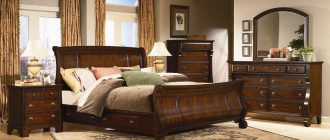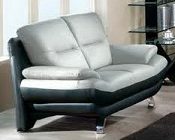The design of Austrian furniture, especially prior to the Baroque period, bears a close relationship to that of South Germany, while the proximity of Italy, and in particular of Venice, is also apparent. German and Italian influences often merged in Tirolese sections, where various towns held several fairs each year, frequented by large numbers of German, Swiss and Italian traders. During the latter part of the seventeenth century there was a great influx of Italian architects, cabinetmakers, sculptors and painters, seeking better living and working conditions.
French influence developed during the first half of the eighteenth century, when the more affluent and fashionable families sent to Paris for furniture from shops of the greatest ebeniste«. Such examples were imitated by native craftsmen, whose products, it has been claimed, were hardly distinguishable from the French pieces of the Regence and Louis XV period.
Nevertheless, like the German, Austrian furniture produced during the extended Rococo period retained much of the Baroque. This can be clearly recognized in dated pieces produced late in the century. Decided angularity appeared in curved forms, while scrolled profiles were often broken by cusps or short straight breaks in their contours. Carved ornament was generally rather heavy, though carried out with considerable style, while inlays were often rigid in effect. Inlaid bandings were favored in single light wood strips, or a darker strip enclosed by light stringing lines. Such bandings were utilized throughout the eighteenth century, in borders, or in centralized decorations, either angularly or cursively interlaced. Cube parquetry and checkered effects in borders were employed during the latter half of the century. In Austria marquetry was generally used for geometrical rather than foliage patterns. Figural ornament is seldom found in this medium.
Walnut and burl walnut were used to a considerable extent, not only native ‘Varieties but also others brought from Italy and the Rhine areas. Additional woods frequently employed were oak, maple, birch, hazel and fruit-woods. Pine was used principally for carcase work. Walnut and the fruit-woods were also utilized for secondary purposes. Cherry and yewwood came into increasing favor toward the close of the century. Austrian furniture was also popular in painted finishes, particularly in the white and gold decor favored in Italy and Germany.
Mahogany appeared in Viennese furniture of Louis XVI, Directoire and Empire vogues, gradually replacing walnut which was not popularly shown again until about 1830. The adoption of this imported wood, which was often given a light finish, caused some craftsmen to apply matching stains and finishes to pieces made in walnut, pear-wood and other local timbers.
Austrian furniture has no particular appeal in western Europe or America today, except for pieces produced in Vienna from about 1780 to 1830. Vienna was then one of the liveliest and most magnificent cities of Europe, with over one hundred and thirty summer residences of the nobility and gentry in the populous suburb of St. Ulric. Here was the residence of the Imperial Court, and of the various foreign ambassadors. The population contained Germans, Italians, Spaniards, Dutch, Lorrainers, Swiss and many other nationals.
At this time Viennese craftsmen no longer relied upon French, German and Italian designers for inspiration. Native products, based upon the common sources of Directoire and Empire designs, were highly original, showing a good understanding of form, balance and the use of ornament in gilded bronze.
Many types of furniture that were popular in France were also found in Vienna: varieties of seat furniture, occasional tables, gueridons and servantes, semi-elliptical and oblong consoles, dessertes and commodes, bureaus and secretaires. These native forms also coincided with, rather than followed, similar designs in England: dumbwaiters, sofa tables, open-shelf cabinets, and bookcases.
These pieces fit so well into modern “Regency” interiors because the mode of life in Vienna at this time closely resembled that of London. In both cities a large proportion of the population existed in comfortable circumstances. The formal architecture of their homes was accompanied by equally formal and attractive interiors, furnished to indulge elegance and leisure.
Also at this time Vienna’s cabinetmaking skills developed to their highest levels. Although charges of excessive perfection may be justified, nevertheless such skills reflect the great pride taken in this manual art. Drawers and their housings were often so perfectly made and fitted that, even today, when one fair-sized drawer is pulled out and returned, the other drawers in the same bank will be propelled forward by the air force thus created. Drawer linings were delicately dovetailed, molded and finished. Intervening partitions were made flush on top, and paneled beneath with astragal moldings, applied to and concealing the four abutments. Other intricacies appeared in finely constructed interior compartments and receptacles, while laminated panels were used to prevent warping and shrinkage.
The popular use of elements, or major units of support, in the form of canephorae, eagle heads, winged caryatids, chimeras, dolphins, or shaggy legs with paw feet, may often be seen in typical Viennese productions, and in less finished Austrian work. The quality of these sculptural effects in wood and gesso will usually betoken the quality of the piece as a whole. It is apparent that lesser craftsmen did not care to let such featured work out to more specialized hands. The use of gilded elements is found in many of the finer examples, often with Egyptian head capitals carried out in either bronze work or carved wood with gesso priming.
During the Empire and Biedermeier periods Austria continued to produce both heavy and refined designs, in furniture closely paralleling the work of adjoining states, particularly Bavaria and Wurtemburg. However, Viennese designs were sometimes finer, possessing even more grace and elegance than the designs of the principal South Cerman center of Stuttgart. During the Biedermeier period Hungarian “watered” ash came into fashion, displaying a vigorously marked figure which may be seen in the famous commode supplied by Chippendale’s shop for Nostell Priory.





